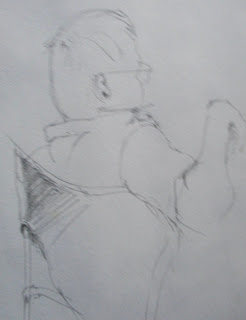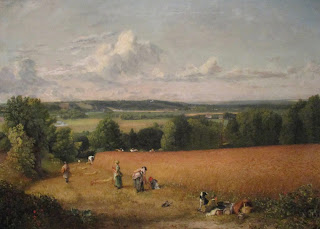 |
| (C) 2019 Dale DiMauro |
Recording a quick sketch when your subject is in an unposed posture can be quite rewarding. Naturally, it can be challenging too. Regardless, this is a good practice to develop in public if you get the chance.
On the one hand it may be best to ask for an individual's permission. On the other hand it may not be as unposed as you intended. Occasionally, on a picnic I will sketch a friend or relatives posture, in that moment, if I can.
If it turns out terrible you can turn the page and start another one at a later point. Really, there is no loss, you just move on.
This drawing was done fast. I liked the way this guy's body was held up in and around his folding chair. You can't make this posture up. It was too good--perhaps even comical.
Foreshortening is usually tough to convey accurately. Is his right arm drawn the way it is? I don't know but after reviewing what was done I figure the next time I will do even better.







